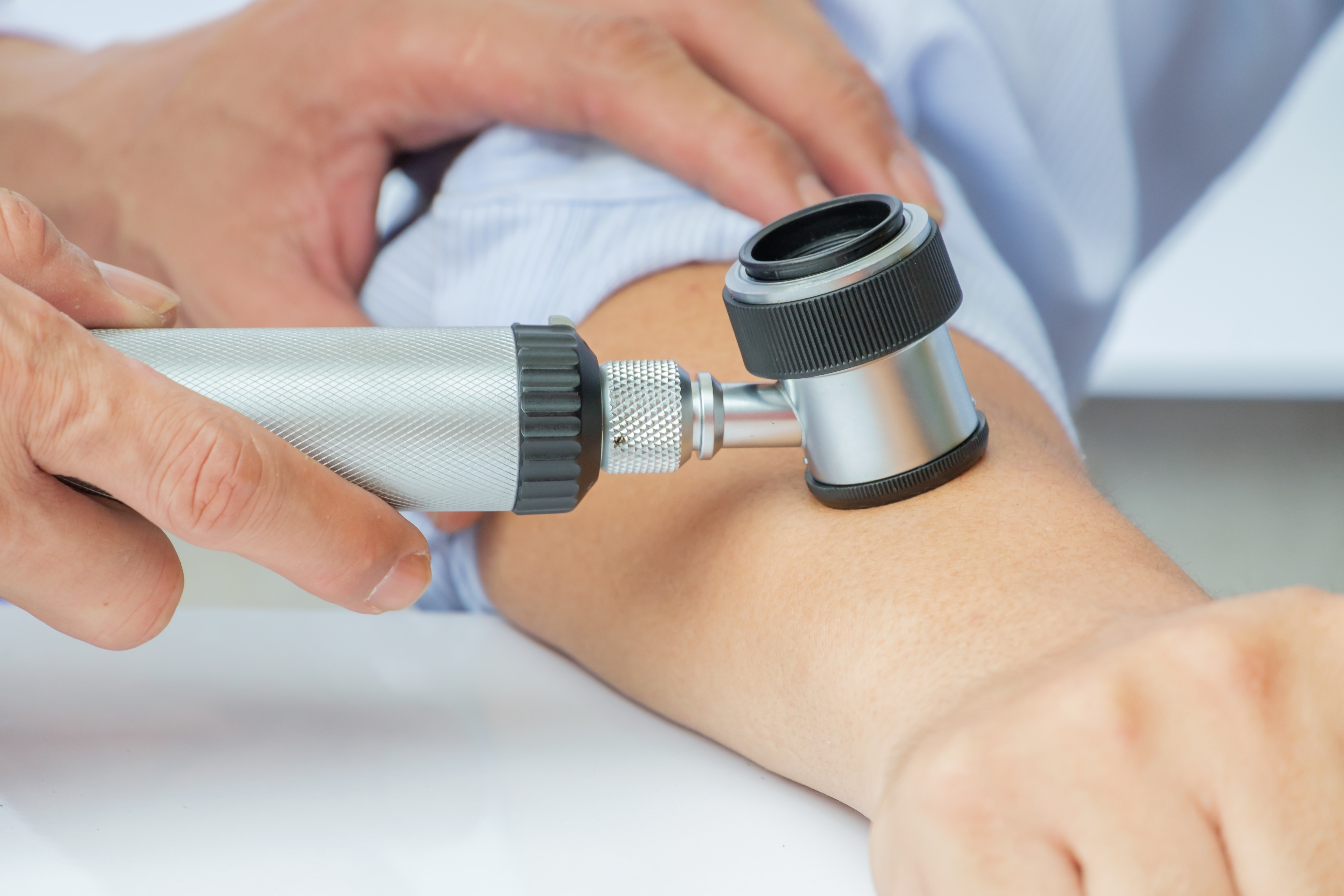

Dermatological examination
The purpose of a dermatological examination is to identify and screen for skin problems, find the cause of skin complaints, and assess the condition and nature of moles.
The purpose of a dermatological examination is to identify and eliminate skin problems, find the cause of skin complaints, and assess the condition and nature of moles. Our specialists can also provide assistance in cases of allergic skin lesions, itching, redness, peeling, rash, aesthetic skin problems, and acne (inflamed, acne-prone skin).

The skin is not only our largest organ, but also our body's first line of defense. Any external or internal effect is reflected in our skin, be it sunlight, disorders of internal organs, or the passage of time. The health of our skin and its monitoring are not only essential from an aesthetic point of view, as sudden symptoms can even indicate a serious illness.
Purpose of a dermatological examination
The purpose of a dermatological examination is to identify and eliminate skin problems, find the cause of skin complaints, and assess the condition and nature of moles.
What symptoms should you see a dermatologist for?
In case of sudden and/or unusual complaints (such as persistent itching, redness) and other skin problems (a mole of changed size, etc.), it is worth seeing a specialist as soon as possible, because the background of dermatological changes may even be a more serious disease affecting the internal organs.
See a doctor as soon as possible if the color, shape, size, or structure of a mole changes, or if it is painful, sensitive, itchy, flaky, or bleeding.
If you have a mole, the basic condition for preventing malignant skin cancer, i.e. melanoma, is annual, regular screening.
Most common dermatological diseases
Skin infections, which can be caused by bacteria, viruses, and fungi. Bacterial skin infections include, for example, impetigo and cellulitis (not to be confused with cellulite, i.e. cellulite). Among viral skin infections, the most common example is warts. In the case of fungal infections, nail and foot fungus caused by dermatophyton fungi should be highlighted.
One of the most common forms of benign skin tumors is a mole, which is congenital in some people, but lesions that develop with age are much more typical. The most malignant type of malignant skin tumor is melanoma, which is usually caused by the harmful radiation of the sun.
How is a dermatological examination performed?
During a dermatological appointment, the first step is for the dermatologist to take your medical history (for example, when your symptoms started, what medications you are taking, whether you are allergic to anything, how much time you spend in the sun, whether you are in contact with chemicals, whether there has been a history of skin cancer in your family). The accuracy of this contributes greatly to effective examination and treatment.
The dermatologist then examines the skin for cancerous lesions, i.e. performs a mole screening, which consists of both a visual inspection of the skin surface and a dermatoscopic examination. The dermatoscope is a magnifying glass with a handle and an internal light, which allows the potential progression of individual moles and skin lesions to be accurately monitored.
In the case of other complaints (acne, itching, rashes, etc.), the dermatologist examines the affected skin surface and, if necessary, a sample can be taken, which is painless.
What treatments can you use?
Treatments performed by our dermatologists include the excision of various skin and nail lesions (such as benign and malignant skin tumors, warts, ingrown nails, subcutaneous lesions), the treatment of chronic skin wounds and nail bed plastic surgery, as well as the treatment of allergic skin lesions, itching, redness, peeling, rashes, aesthetic skin problems and acne (inflamed, acne-prone skin).
Articles

 Log in with GoodID
Log in with GoodID